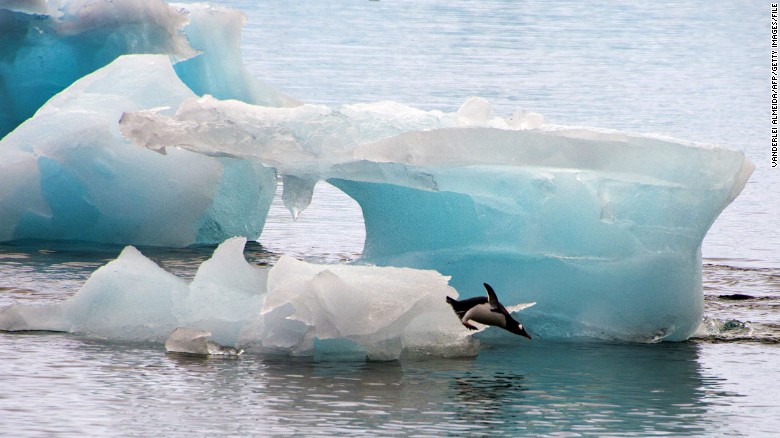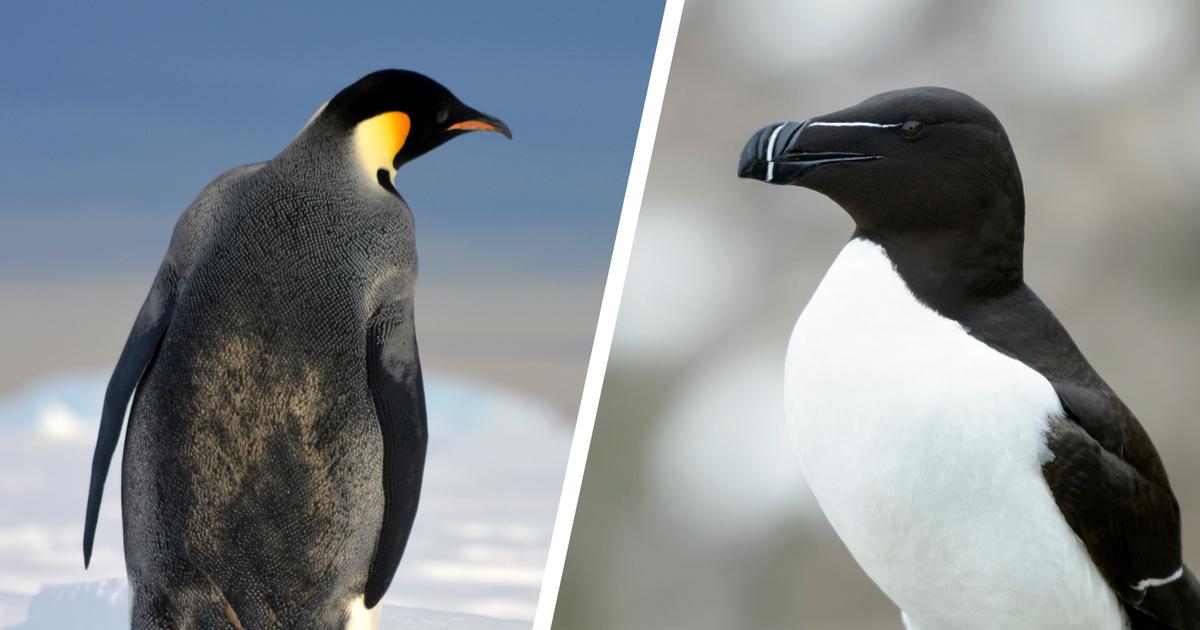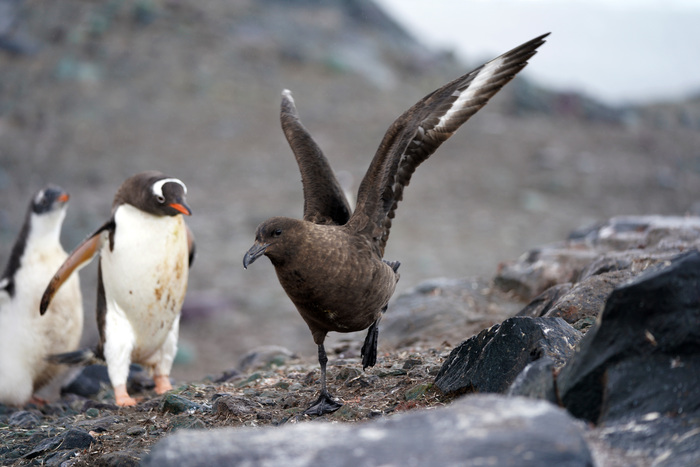Penguin makes the world happy amid the pandemic 0:47
(CNN) –– When you think of penguins, the first image that comes to mind is usually that of the bird walking through the snow or swimming in the icy waters of Antarctica.
But penguins didn't originate in Antarctica, as scientists have believed for years: They first evolved in Australia and New Zealand, according to a study by researchers at the University of California at Berkeley.
Two penguins play before mating on King George Island, Antarctica, in March 2014.
The research, which was conducted in collaboration with museums and universities around the world, analyzed blood and tissue samples from 18 different species of penguins. This genomic information was used to go back in time to track the movement and diversification of penguins over millennia.
"Our results indicate that the Crown Penguin group originated during the Miocene (geological period) in New Zealand and Australia, not in Antarctica as previously thought," said the study, published Monday in the journal Proceedings of the National Academy of Sciences . "Penguins first occupied temperate environments and then spread to cold Antarctic waters."
Penguins originated in Australia and New Zealand 22 million years ago, the researchers suggest. Afterward, the ancestors of the king penguin and the emperor penguin parted ways and moved to Antarctic waters, likely drawn by the abundant food supply there.
A penguin dives off a block of ice in Antarctica in March 2014.
These findings also support the theory that king and emperor penguins are the 'sister group' to all other penguin lineages, adding a piece to the long-debated puzzle of where exactly these two species are found in the family tree. .
Then, about 12 million years ago, the Drake Passage - the body of water between Antarctica and the southern tip of South America - was completely opened. This allowed the penguins to swim throughout the Antarctic Ocean and spread further into the subantarctic islands, as well as the warmer coastal regions of South America and Africa.
Today, these flightless birds are still found in Australia and New Zealand, as well as in Antarctica, South America, the South Atlantic, southern Africa, the sub-Antarctic islands, the Indian Ocean, and the subtropics.
- MIRA: Satellite images reveal new colonies of penguins in Antarctica
During the study, the researchers also discovered a new lineage of penguins that has yet to receive a scientific description.
Penguins can adapt, but not enough for climate change
The study also yielded information on the adaptability of penguins to changing climates, and on the danger they now face in the modern climate crisis.
'We can show how penguins have been able to diversify to occupy the incredibly different thermal environments they live in today, from 9 degrees Celsius in the waters of Australia and New Zealand, to freezing temperatures in Antarctica and up to 26 degrees Celsius in the Galapagos Islands, ”explained Rauri Bowie, one of the principal investigators and professor of integrative biology at UC Berkeley, in a university news release.
Chinstrap penguins decrease by 77% 0:32"But we want to make it clear that it has taken millions of years for penguins to occupy such diverse habitats, and at the rate at which oceans are warming, penguins will not be able to adapt quickly enough to cope with the changing climate," he added.
The team was able to identify genetic adaptations that allowed the penguins to thrive in challenging environments. For example, their genes evolved to better regulate body temperature, which made it possible for them to live in both freezing temperatures in Antarctica and warmer tropical climates.
But these evolutionary steps took millions of years, time that penguins don't have now, as their populations are declining.
"Right now, climate and environmental changes are going too fast for some species to respond to climate change," said Juliana Vianna, associate professor at the Pontificia Universidad Católica de Chile, in the UC Berkeley statement.
- LEE: Some penguin colonies in Antarctica have decreased more than 75% in 50 years
The different elements of climate change lead to a perfect storm. The disappearance of sea ice means fewer breeding and resting areas for emperor penguins. Shrinking ice and warming oceans also mean less euphausia, the main component of penguins' diet.
The second largest emperor penguin colony in the world has almost disappeared; Thousands of chicks of this species in Antarctica drowned when sea ice was destroyed by storms in 2016. Recurring storms in 2017 and 2018 killed nearly all chicks at the site each season.
Some penguin colonies in Antarctica have declined by more than 75% over the past 50 years, largely due to climate change.
In Galapagos, penguin populations are declining as warm El Niño events - a climate phenomenon in which the eastern Pacific Ocean warms - occurs more frequently and more severely. In Africa, warming waters off the southern coast have also caused penguin populations to decline dramatically.
AntarcticaAustraliaNew ZealandPenguins



/cloudfront-eu-central-1.images.arcpublishing.com/prisa/VPFDJ6LOFBD4DJB77PGQNQCUCE.jpg)

/cloudfront-eu-central-1.images.arcpublishing.com/prisa/GLQIPWOC3VBT3BKZRNAZOQJEQU.jpg)
/cloudfront-eu-central-1.images.arcpublishing.com/prisa/RDP7XNGW75D75IA7EEZLKLBVJQ.jpg)


